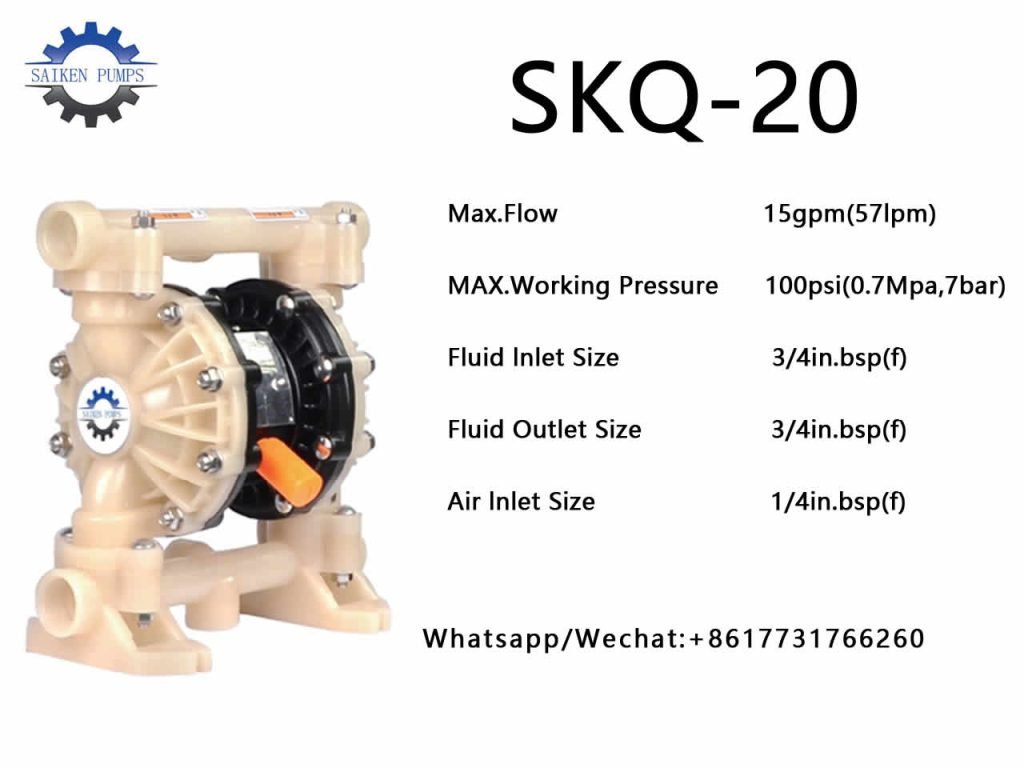
China Pumping Solutions Leader
Diaphragm pump is a special centrifugal pump, it through the diaphragm up and down reciprocating movement to achieve liquid delivery. Due to its unique structure and working principle, diaphragm pumps are widely used in many industrial fields, such as chemical, petroleum, food and pharmaceutical industries. According to different classification standards, diaphragm pumps can be divided into a number of different types. This paper will introduce some common diaphragm pump classification, and give a brief overview of their characteristics and applications. Pneumatic diaphragm pump: Pneumatic diaphragm pump is a diaphragm pump that uses air pressure as a power source. It usually consists of two diaphragms, two valve bodies and an air drive device. Through the reciprocating movement of the pneumatic device, the compressed air alternately pushes the up and down reciprocating movement of the diaphragm between the valve body, so as to achieve the suction and discharge of the liquid. Pneumatic diaphragm pump has the advantages of self-priming performance, strong corrosion resistance, no leakage and suitable for various liquids, etc., and is widely used in chemical industry, sewage treatment and mine discharge fields. Electric diaphragm pump: An electric diaphragm pump is a diaphragm pump that uses an electric motor as a power source. It usually consists of two diaphragms, two valve bodies and a motor. Through the motor drive, through the connecting rod and crankshaft mechanical transmission, to achieve the diaphragm up and down reciprocating movement, so as to achieve liquid delivery. The electric diaphragm pump has the advantages of simple structure, easy maintenance, low noise and long service life, etc., which is suitable for transporting all kinds of medium and small viscosity liquids and solid particle suspended liquids. Mechanical diaphragm pump: A mechanical diaphragm pump is a diaphragm pump that uses a mechanical transmission device as a power source. It usually consists of two diaphragms, two valve bodies and a mechanical transmission. Through the rotating movement of the mechanical transmission device, the up and down reciprocating movement of the diaphragm is driven to achieve liquid transportation. Mechanical diaphragm pump has the advantages of energy saving, environmental protection, adjustable flow and long service life, and is widely used in petrochemical, electric power, metallurgy and papermaking. Peristaltic diaphragm pump: Peristaltic diaphragm pump is a diaphragm pump that uses peristaltic principle for liquid transport. Through the action of the compression device inside the pump body (such as a roller or compression drum), the hose in the pump shell produces peristaltic deformation, so as to achieve the suction and discharge of liquid. Peristaltic diaphragm pump has the advantages of no pollution, no leakage, easy to clean and suitable for high viscosity liquids, etc., and is widely used in pharmaceutical, food, water treatment and laboratory fields. The above are some common diaphragm pump classifications. The selection of diaphragm pump should be comprehensively considered according to the specific process requirements, medium properties and working conditions. Different types of diaphragm pumps are suitable for different application scenarios, and choosing the right diaphragm pump can improve production efficiency, reduce energy consumption and ensure safety. When using the diaphragm pump, the relevant operating procedures and safety requirements should also be followed, and the state of the pump should be regularly checked and maintained to ensure the normal operation of the pump and extend the service life.
